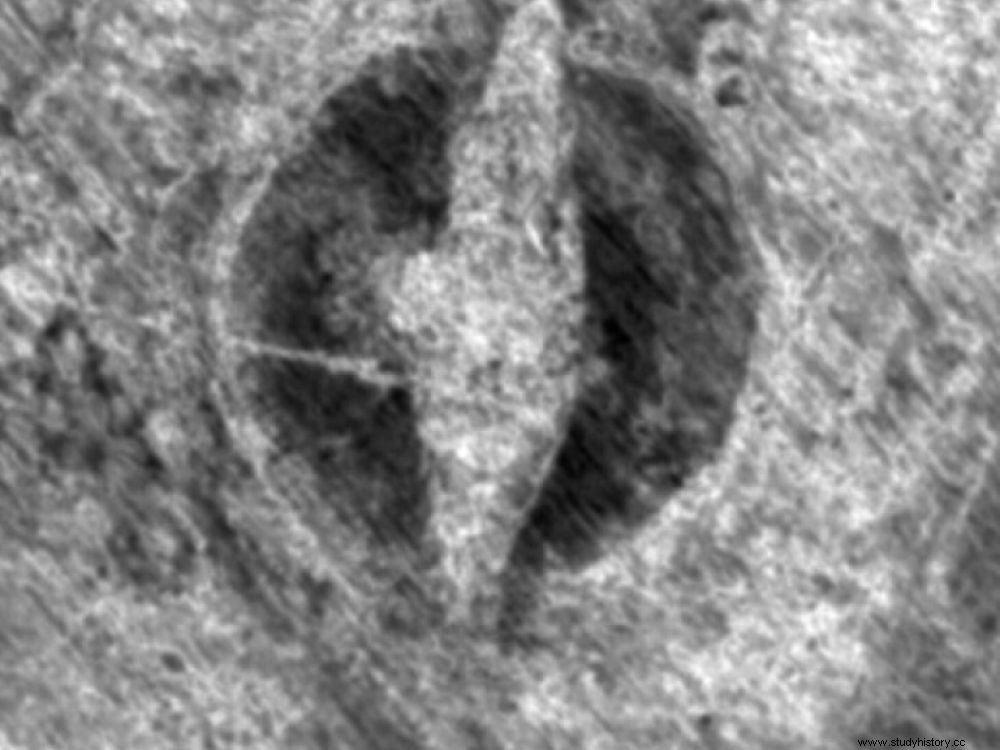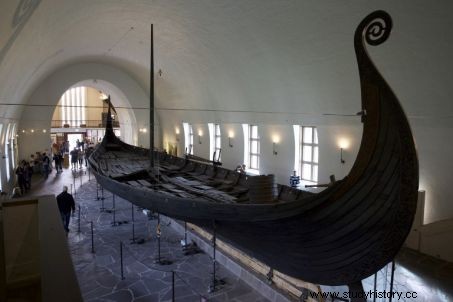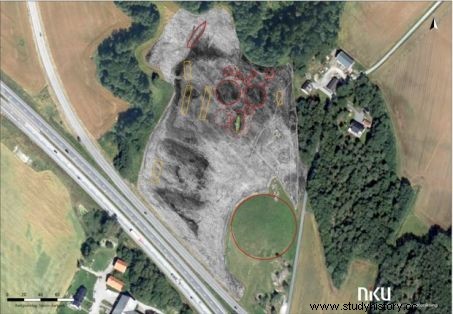A Viking ship grave, burial mounds and five longhouses have been discovered in Norway, thanks to the use of ground-penetrating radar

Viking grave ship detected by georadar in Norway
To reach Valhalla, their paradise, Viking warriors sometimes embarked for Odin's palace aboard large ships... Archaeologists announced on Monday, October 15, 2018 that they had discovered the traces of a Viking ship buried in the southeast of Norway, a rare find that could help shed light on the expeditions of these talented medieval navigators.
The typical shape of the craft was detected using ground penetrating radar (Geared Radar) about 50cm underground in a mound overlying a Viking burial at Halden in Ostfold County, Australia. southeast of Oslo.
"In the middle of the grave, we discovered what is called an anomaly, something that stands out from the rest and clearly has the shape and dimensions of a Viking ship ", archaeologist Knut Paasche of the Norwegian Institute for Cultural Heritage Research (Nikus) told AFP.

Use of ground penetrating radar at the Viksletta site, near Jellhaugen, Norway. In the background, the mound containing the Viking ship. Credits:NIKUS
"What can't be said for sure is the state of preservation. Yes, there was a boat there, but it's hard to say how much wood is left ", he explained.
In the Viking Age when these northern European warriors and merchants roamed the seas between the 8th and 11th centuries, it was customary to bury kings and chiefs aboard a boat hoisted ashore. and buried under a mound. Sometimes in the company of sacrificed animals and slaves, skraels .
Only three well-preserved Viking ships have ever been discovered in Norway:the Oseberg ship (21 meters long), in 1904; and those of Gokstad (23m), in 1880, and Tuneskipet (19m), in 1867. All three are now on display in the Viking Ship Museum, in Bygdoy, near Oslo.

Oseberg ship. Credits:Noe Falk Nielsen / Nur photo /AFP
"We need more discoveries to be able to tell what these ships looked like and determine how the Vikings sailed ", argued Mr Paasche. Although deprived of a bow and stern, the silhouette discovered at Halden in advance of agricultural drainage operations is 20 meters long, making it potentially one of the largest boats vikings discovered in the country, according to the Niku.
The institute says it is now thinking about the follow-up to be given to this discovery, an excavation attempt being ruled out anyway at this time of the year. In addition to the boat grave, ground-penetrating radar surveys have located eight burial mounds and five longhouses, previously unknown.

Aerial view of the burial mounds and longhouses of Halden (Norway). Credits:NIKUS
To date, Norway is not the only country where Viking boat burials have been discovered. In addition to Ladby, Denmark, or Vendel, Sweden, again in 2011, a man buried in one of these ships was exhumed with his shield, sword, spear and funerary offerings, in Ardanamurchan, Scotland.
B.A with AFP
